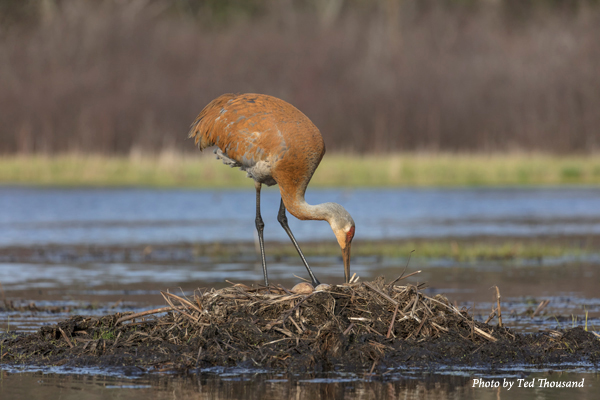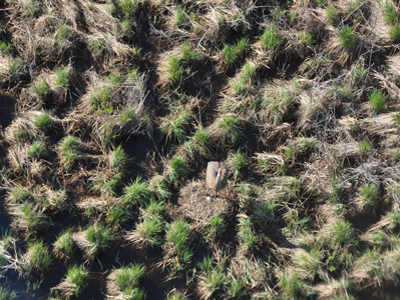
CONTACT:
Anne Lacy, Director of Eastern Flyway Programs – North America, (608) 356-9462, ext. 146;
Jodi Legge, Director of External Affairs, 608-356-9462, ext. 120
International Crane Foundation Will Conduct Survey on April 24-25th
Baraboo, WI – The International Crane Foundation (ICF) will conduct a helicopter survey to help locate Sandhill Crane nests near Briggsville, Wisconsin, on Monday, April 24th and Tuesday, April 25th. The survey will be conducted during daylight hours at the junction of northern Columbia, southwestern Marquette, and southeastern Adams counties. Although these are the planned dates, all are subject to change.

The helicopter survey is part of ICF’s long-term effort to monitor the local Sandhill Crane population. This region hosts one of the densest nesting populations of Sandhill Cranes known anywhere in the world. The most recent study was done in 2003, and researchers are looking to determine if the density has changed in 20 years. With this information, ICF will determine how local crane breeding density changes over time and how breeding density might affect reproductive success and survival.
Searching by helicopter is the most efficient and least disruptive method of locating crane nests. Helicopter surveys allow the ICF to find the maximum number of nests in the shortest time by flying low over the major wetlands in the area and observing incubating birds on their nests. This survey technique does not harm the cranes. Although the birds may initially flush from nests, they quickly return as soon as the helicopter leaves the area. The survey flights are designed to be as non-disruptive as possible. The flights entail flying low and slow over wetlands while sometimes stopping to hover. Flying low over houses and livestock is avoided, and the helicopter does not land. This flight will not involve tourism of any kind. Our ongoing study of the local crane population would not be possible without the support and cooperation of local landowners.
